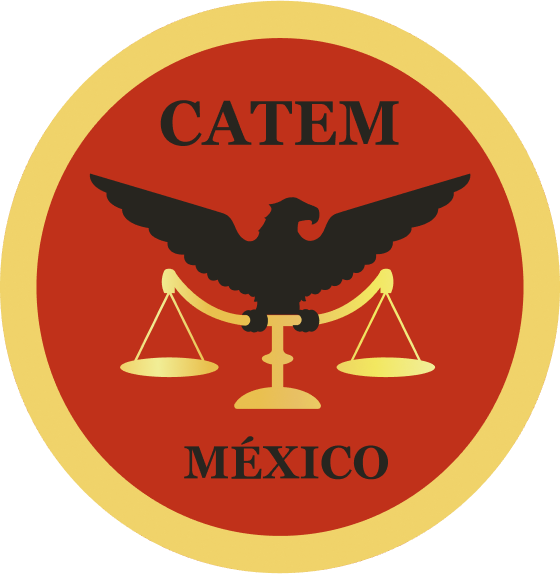Steps to Building an Effective Team People & Culture
Content
- Beyond Individual Growth: How Team Building & Development Can Give You a Competitive Edge
- Continue to build team spirit (yes, again)
- Reasons Why Blended Learning Is Ideal for Corporate Training
- Identify your working and leadership style
- How can you help your team advance in their development?
- Principles of Management
Robin Domeniconi, chief executive of Thread Tales, a fashion company, told me at the time of our interview that she used the expression “M.R.I.” as a cornerstone of culture. It is incredibly important for leaders to set a tone, and model the behavior, that everyone will respect one another. If team members don’t feel respected, they won’t be motivated to bring their best ideas — and their best selves — to work. Pull together a group of people to work on any project, and they will develop a culture of their own, and it will be as unique as the people in the group.

This stage occurs when team members are adjusting to each other and settling into their roles on the project. There will be a lot less arguing and planning and more working with one another. Team members will be tired of conflicting ideas and work harder to solve problems and reach the best state possible for the group to achieve. Additionally, the ‘forming meeting’ should have an itinerary created by the leader with steps that will keep the team members active and engaged while learning about each other and the task at hand. When a group of any kind first meets, it’s critical that things start off on the right foot. This is where teams get to know each other, the abilities of their teammates and the details of the project they will all work on together.
Later, during the norming and performing stages, norms focus on relationships and levels of performance. Performance norms are very important because they define the level of work effort and standards that determine the success of the team. As you might expect, leaders play an important part in establishing productive norms by acting as role models and by rewarding desired behaviors. As your team settles into a more regular pattern, it’s vital that you continue to take opportunities to celebrate one another and keep team spirit high. Happy teams are productive teams and so taking the time to improve team bonds through the team development process can help improve overall efficacy. An organization is only as strong as the teams it creates to handle various projects.
While not part of Tuckman’s original model, it is important for any team to pay attention to the end or termination process. Any insights should be shared in a public forum so everyone in the company can learn. Disagreements are unavoidable on teams, especially when each person on the team has a different perspective on how to approach the issues the team encounters. When you all work in the same location, it can be easier to hash out problems quickly. On a remote team, you need to be more thoughtful about the tools and the processes that you use to identify and deal with disagreements.
Beyond Individual Growth: How Team Building & Development Can Give You a Competitive Edge
As a result, the team works more efficiently because members understand what’s expected of them and know how to share their ideas and seek feedback. In any team, members can’t work in tandem if there’s no chemistry between. A team’s effectiveness gets enhanced by a commitment to ongoing growth and development. That’s particularly for new teams because members need to get acquainted with each other first before they start to work towards the common goal. The principal work for the team during the Forming stage is to create a team with clear structure, goals, direction and roles so that members begin to build trust. During the Forming stage, much of the team’s energy is focused on defining the team so task accomplishment may be relatively low.
As a leader, it’s important to be aware of your team’s stages as you continue to develop. If you want your employees to thrive, a growth mindset is a necessity. A growth mindset means you’re able to improve your abilities through dedication and hard work. When someone has a growth mindset, it means you’re able to see beyond the fixed, static experience of today. Leaders who listen — especially in this digital era — have better-developed teams.
The workshop challenges members to reflect on where they can have the most impact and influence. Use this workshop to refine priorities and empower ownership among team members. A workshop for a team to reflect on past conflicts, and use them to generate guidelines for effective conflict handling. The workshop uses the Thomas-Killman model of conflict responses to frame a reflective discussion. As with any aspect of teamwork, it can be easy to fall into a pattern and not consider how you might improve your process until it becomes a problem.
Continue to build team spirit (yes, again)
If teams get through the storming stage, conflict is resolved and some degree of unity emerges. In the norming stage, consensus develops around who the leader or leaders are, and individual member’s roles. Interpersonal differences begin to be resolved, and a sense of cohesion and unity emerges.
- But, even if your direct reports are ambitious and working hard to uplevel on their own, your team may still not be performing exceptionally well.
- The tight structure supports team members to be open and honest in their assessment.
- One vital thing to remember is that it’s important to accept that personal differences in working style or goal perception are part of being in a team.
- According to co-CEO John Mackey, they have developed a high degree of trust that results in better communication and a willingness to work out problems and disagreements when they occur.
- Commitment to the team’s mission is high and the competence of team members is also high.
Other activities geared toward creating a learning environment, exceeding results and engaging employees must be present. The effectiveness of team building differs substantially from one organization to another. The most effective efforts occur when team members are interdependent, knowledgeable and experienced and when organizational leadership actively establishes and supports the team. The adjourning phase is when employees move on to other projects. Team development plays a critical role in your organization’s success. When the five stages of team development get successfully implemented, a sense of partnership and community is fostered.
The storming phase may be quick or it may be incredibly long, depending on the complexity of the project. Since tensions may get high during this phase of the team, be prepared for there to be some arguing, hurt feelings and other conflicts amongst team members. The introduction of a group should be structured by the leader. They should provide a safe and welcoming environment for all team members to share their skills, background knowledge and goals. As a leader, recognizing and appreciating the team for their hard work and contributions is invaluable. It’s a great time to celebrate the team and encourage teammates to celebrate one another.
Reasons Why Blended Learning Is Ideal for Corporate Training
Teams hit more meaningful business outcomes, enabling leaders to then sustain better talent outcomes, and the cycle continues. Before jumping headfirst into team development, you need to diagnose the highest leverage areas. These are the focus areas that you believe will have the greatest impact on your team’s ability to hit their goals.

Facilitators work with the sponsor to agree a team development plan to include clear objectives, timescales, and ways of measuring the impact of the work. At the beginning, everyone is excited about being a part of the team. Even though they aren’t sure how things will turn out, they know it will five stages of team development principles of management be a great experience. At this stage, the team is characterized by high enthusiasm and low productivity. While the team forms, the role of the leader is to give clear direction, set out the goals and objectives, and help the team members understand exactly what the leader expects them to do.
Identify your working and leadership style
For some groups, the idea of getting to know you activities elicits a collective groan. Overly prescriptive or unimaginative exercises can frustrate a team, particularly if it’s not their first rodeo. In this activity from Hyper Island, group members create their own questions on post-its and trade them with other group members as they mingle and break the ice. In virtual teams, the need for activities to help teams get to know each other is even greater, as some of the usual spaces for mingling and forming bonds are unlikely to be unavailable to them. Let’s take a look at some activities designed to help teams get to know each other in the Forming Stage. But no matter what the reason teams are formed, they go through four stages, according to a 1965 research paper by Bruce Tuckman of the Naval Medical Research Institute at Bethesda.
You can build your teams by structuring activities and fun events that team members can do together. In a larger organization, organization development staff can lead the team-building sessions. Many human resources practitioners are also comfortable leading team-building sessions. And with a little practice, teams can use another employee to facilitate their group’s session. Disagreements and differences of opinion will always happen when passionate and talented people get together – the key is to not get bogged down and find productive ways to navigate those differences.
How can you help your team advance in their development?
We then share why individual development alone doesn’t suffice, and offer a guide to help you bring more team development to your organization. Team development isn’t easy, but those that do it successfully will gain a competitive edge. Teams will adapt more effectively to inevitable changes, create stronger sense of belonging and progress, and more easily scaffold individual goals to collective commitments.
Principles of Management
A team takes on a life of its own and you have to regularly nurture and maintain it, just as you do for individual employees. In the five decades since Bruce Wayne Tuckman developed his stages of team development, workplaces and teams have changed—and for the better. Many modern workplaces have evolved beyond basic hierarchical management structures, opting for a more collaborative team dynamic based on mutual respect, trust, and shared ideals. Conflict can often arise if members of a team don’t feel as if their needs are being met by others on the team or the regular give and take of effective teamwork breaks down. Conflicts around how teams work together often come from misunderstandings in responsibilities or how roles interrelate.
Build relationships
There may be regret as the team ends, so a ceremonial acknowledgement of the work and success of the team can be helpful. If the team is a standing committee with ongoing responsibility, members may be replaced by new people and the team can go back to a forming or storming stage and repeat the development process. Reaching the performing stage is a major success and often precipitates some form of team learning. Team learning is a behavioral process of seeking, gathering, discussing, and implementing methods of team success. Whether through training, group initiative, or innovative leadership, team learning is an action step that ensures healthy team development.
It’s important to see team development as a process, not a one-off activity. Creating a team development plan with team development goals that are reviewed and revised regularly demonstrates a leader’s focus for continuous improvement. Teams continue to grow and develop and can learn from their experiences if team members are encouraged to regularly review experiences and share learning. The final stage is marked by high productivity and enthusiasm. The team is collaborating to meet the original goals and objectives, and the members are excited to be on a high-performing team. In this stage, leadership is shared as the team works toward exceeding standards and continuous improvement.



Leave a comment